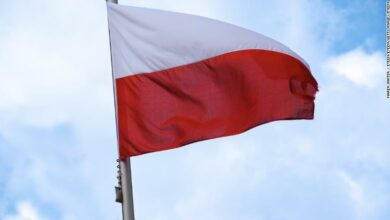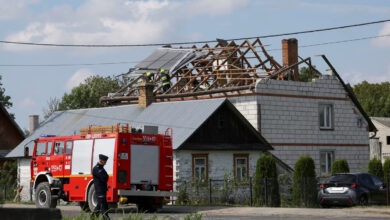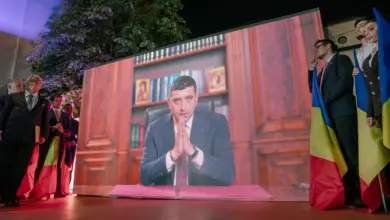With such high expectations going in, I’m pleased to find that the wonderful Polish city of Krakow fills and goes beyond them.
As I get off the plane, I’m astonished by how empty the surroundings of the airport are. Once out, I get ushered immediately into real Poland, or at least the one I was hoping for. The train station doesn’t quite deserve the name “station,” as it’s more of a platform; you can hardly imagine that a train will actually stop there. But it does – at least one every hour – and it’s probably more than 30 years old.
The landscape stretching from the airport to the city center is breathtaking; I sit down and glue my forehead to the window to take it in while I can. Despite its beauty, the scenery is mottled with harsh images, which I remember from my first trip to Central Europe. The train ride helps me jump back into this relatively unknown part of Europe, which turned its back on communism only two decades ago. Wounds are still visible in the form of run-down houses, shelters, farmers riding horses and (very) old tractors.
Krakow central station doesn’t impress me in my first view of the city. It bears reminders from the communist era: poor, dirty and full of signs I can’t understand.
But I’m thrilled; here I am in a former communist country. I’m finally discovering a part of the world I’ve heard and learned so much about, yet have never experienced with my own eyes, ears and nose (yes, the way the air smells different in every city is one of my favorite parts of traveling).
My friends and I walk to the nearest exit of the station and all of the sudden my excitement plummets. The exit is actually the entrance to the station’s mall, or, in other words, a door to the first stage of the westernization of Krakow. Standing on a shiny, spotless floor, my mind full of enthusiasm, I find myself surrounded by Starbucks, Costa Coffee, H&M, Zara and many other American or western European brands. The place smells like detergent. It was not quite the arrival I dreamed of.
Once I’ve dropped off my backpack at my hostel, I grab my camera and wander over to the Old Town. I am again confronted with the contradiction that that is modern Poland: it looks both capitalist and communist. On one street, I bump into young girls wearing skinny jeans, Zara tops, flat shoes and H&M sunglasses. At another corner, I notice a 45-year-old man wearing old-fashioned clothes that clearly haven’t been washed for a couple of days, trying to survive on the couple of euros per day he earns selling brezels (pretzels) – which are sold at almost every corner of the city.
Although they may seem like they belong in two different cities, the residents of Krakow have one thing in common: their facial characteristics. Almost everyone has a rounded face and light blue eyes; the women are blond and the men wear their hair short. The men and women are generally thin, tall and attractive.
Another thing that really strikes me is the faces of the elderly. They are wrinkled by their pasts, which undoubtedly involved difficult work. These complex features symbolize their personalities: simultaneously ambiguous and straightforward, cold-blooded and generous. It is a mix that, while hardly believable, makes the Poles so special.
And the Poles are genuinely nice. They will always attempt to help, even if you don’t understand each other because of the language barrier.
Krakow is one of the only Polish cities that wasn’t destroyed during the Second World War. It’s hard not to feel its heritage as you walk its streets, especially away from more touristy spots like the Main Market Square and Wawel Castle. The Old Town is surrounded by old ramparts; the castle dominates the city from the hill.
The Jewish district is hidden behind the castle, and offers some wonderful places to enjoy a nice, cheap meal or drink, or to party.
The artistic scene is prominent. From street singers to painters to street clowns and animators, Krakow offers a variety of free and entertaining leisure.
It’s easy to get trapped by tourist-targeting restaurants that have low-quality, overpriced food. Before walking into a place, I always check that there are a couple of locals inside. Polish must-tries include bigos (meat stew), zrazy (beef roulade), and, of course, the traditional pierogi (dumpling). I actually spend my first four days only eating pierogis, and honestly, you shouldn’t be allowed to leave the country without trying one!




